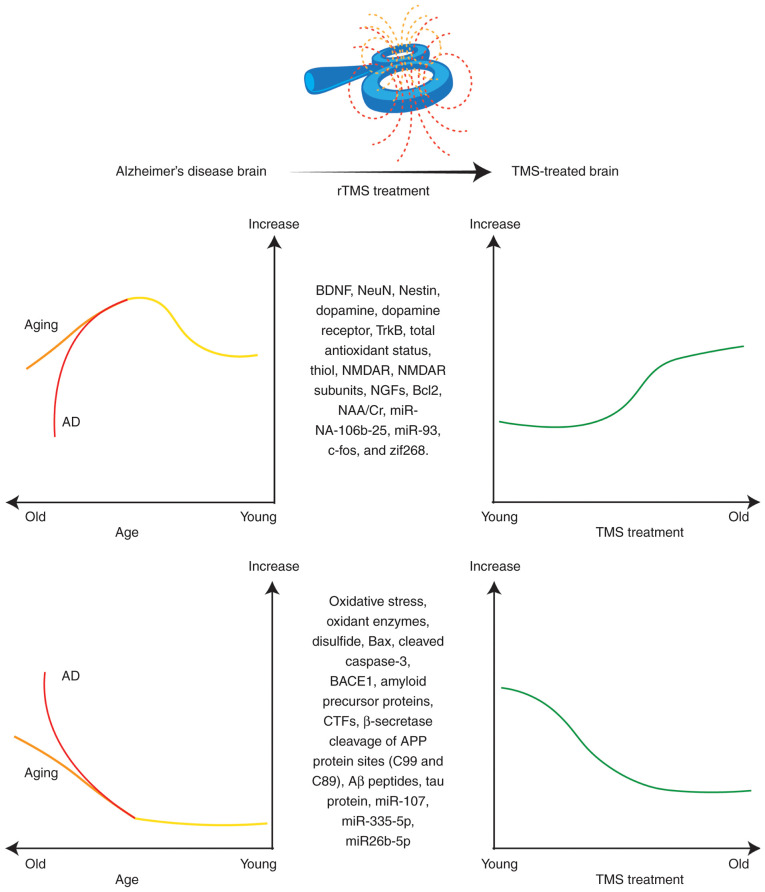Figure 1.
Schematic representation of the proposed paradigm demonstrating neurochemical changes in normal aging and AD, and the effects of TMS on these neurobiological changes, indicating that TMS may restore brain function. Aβ, amyloid-β; AD, Alzheimer's disease; APP, amyloid-β precursor protein; BACE1, β-site APP-cleaving enzyme 1; BDNF, brain-derived neurotrophic factor; CTFs, C-terminal fragments; NAA/Cr, N-acetylaspartate/creatine; NeuN, neuronal nuclear protein; NGFs, nerve growth factors; NMDAR, N-methyl-D-aspartate receptor; rTMS, repetitive transcranial magnetic stimulation; TrkB, tropomyosin receptor kinase B; zif268, Zinc finger-containing transcription factor 268.

